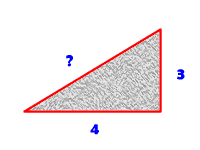Sketch the
graph y= 3sinΘ for 0 < x < 2π
In order to
graph sine or cosine function, you need to determine:
· - Amplitude (a)
· - Period (b)
General
Form:
y= asinb(Θ-c)+d
y= asinb(Θ-c)+d
Determine
the Amplitude of a sine Function
- Amplitude is the distance from the center of the axis to the highest or lowest point for a sinΘ or cosΘ function.
- Amplitude is the distance from the center of the axis to the highest or lowest point for a sinΘ or cosΘ function.
Amplitude = Max- min
2
2
Amplitude=
IaI
So
- To find the period, you first need to determine b
Then plug it in the formula of a period which is 2π
IbI
IbI
- the period of the sin function is
2π, which
means the function repeats itself every 2π
You are now
ready to graph a sine function!
1.
Plot
the period (make sure to have 5 coordinates)
2.
The
amplitude will be the maximum and minimum y-coordinates
3.
If
the equation is positive, after plotting zero the next point will be plot on
the positive side. If the equation is negative, it will be on the negative
side.
4.
then, the next point will be on the
x-axis since the amplitude on the positive and negative side should equidistant, the graph should look like a wave
y= 3sinΘ


















